September 14th, 2009 · 2 Comments
Yesterday I had a absolutely HORRIBLE experience at the British Museum.
It started off ok, as soon as I entered I got a map and began walking through some of the exhibits. I began my adventure in the Living and Dying Exhibit. I then began to climb up the stairs and headed into the Chinese Ceramics Exhibit. As someone who has practiced throwing pottery for seven years, I have a GREAT respect for ceramic technique and craftsmanship. However, I was not pleased with the woman who had answered her phone in the middle of the exhibit and was having a VERY loud discussion on her mobile. This irked me but what happened next sent me over the edge. After looking at the ceramics I went to the Mummy room. The room was packed with people and screaming children (not that I could blame them because I also felt like screaming). As I began to walk around the room in effort to see the mummies and read the panels next to them people, people were bumping me and pushing me out of the way to take touristy pictures with the sarcophagi. This completely disgusted me; these people have absolutely no respect for museums, the dead, history, nor their fellow museum goers. When my corpse is hundreds of years old I do not want it to be on display for people to take pictures with while they hold their thumbs high in the air. If I were those Egyptian pharaohs, commoners, etc. I would haunt those fools. By the time I left the room I felt as though I was going to have a panic attack: my heart was pounding, my head spinning, I could not focus on anything, and I was beginning to regret the coffee I had right before. The rest of the museum is a bit of a blur, I vaguely remember seeing people leaning on ancient statues. Most of the time I was at the museum I felt as though I was heading against the crowd. The only thing that I distinctly remember after that was almost getting run over by a large group of Asian tourists on my way out the door.
Something needs to be done to the layout and the security of these exhibits to improve the safety of visitors and of the artifacts the museum houses. Photography should not be permitted on the premises and a walking path should be constructed (especially in the Mummy room) to make it smoother and easier for every visitor to see and appreciate the artifacts. The use of mobiles in the museum should be restricted and enforced. There should also be more security protecting the statues and patrolling the area. I would not mind paying an entrance fee to the museum if it meant the museum would change these things.
Tags: Rebecca
September 14th, 2009 · 1 Comment
During our time in London we’ve had the opportunity to attend many theatre performances. As I chose to see the optional plays as well, the total count comes to 6: Troilus and Cressida, Arcadia, All’s Well That Ends Well, As You Like It, Pitmen Painters, and Blood Brothers. Although I could probably write an entire paper on each of the plays, I would actually like to discuss the three Shakespeare plays I saw, especially the differences in the theatres where they were performed: The National Theatre and Shakespeare’s Globe.
The first Shakespeare performance we saw was Troilus and Cressida. To be honest, I wasn’t all that excited about the story when I read the play over the summer as it was not as engaging as his more famous plays I was familiar with already. Therefore, I wasn’t too excited to stand for three hours through a play that I thought would be rather boring. The experience at the Globe was exactly opposite of what I was expecting, though. I loved being so close to the actors that I could see every minute facial expression. Seeing the live performance was also much more entertaining than reading it and I learned that you really must see a Shakespeare play to truly appreciate all of the subtleties that are often lost in the text.
All’s Well That Ends Well was performed in the Olivier Theatre of The National Theatre. The Olivier seats about 1200 people and is styled after a Greek amphitheatre. During our tour of the National Theatre, we learned that this semi-circular shape allows the actors to maintain a connection with the entirety of the audience. While this may be a better set-up than the raised stage in the front, especially for Shakespeare, one still has the experience of the lights going down and watching the events unfold from afar. I definitely did not feel a personal connection with the actors and at many points I could barely see their faces or expressions. Overall, I felt kind of far away and uninvolved. I found the play to be mediocre. It had some funny parts, but none were all that “laugh-out-loud.” I don’t necessarily think that this play was any worse than Shakespeare’s other plays as it is such a well-known title; I simply think I felt disengaged with the performance.
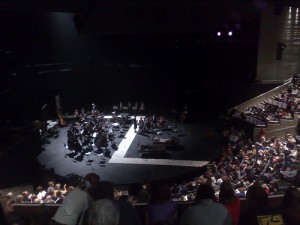
The Olivier
As You Like It proved to me my love for Shakespeare’s Globe. This performance was so incredibly interactive I enjoyed every second of it. At first, I regretted opting for the groundling ticket as I had just come from giving my walking tour, but I later came to realize it was the best place to be for the performance. During the play, the actors walked through the audience and even acted out the wrestling scene in the front of the groundling section. There were numerous points during the show when the actors made side comments about the audience that could not be heard from the seats farther away.
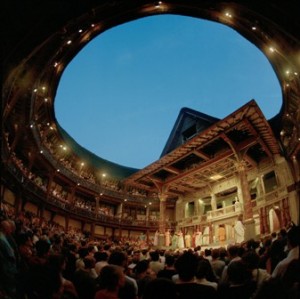
The Globe
The style of the stage at the Globe is the way Shakespeare intended his works to be performed. We’ve heard some criticism about the Globe, especially from A.N. Wilson, because of its links to Disney, its appeal to tourists, etc., etc. I don’t necessarily disagree with such observations, but I do think the Globe deserves some justification. There are few venues where one can see Shakespeare’s plays performed in this manner, and frankly I feel this is the best way to see these performances.
Tags: Sarah · Theatre
September 14th, 2009 · No Comments
As discussed in several different capacities, the pub remains vital to the daily lives of Londoners and, as we will discover in time, the larger United Kingdom. Inns were common along the roads of Roman Britain, as they provided lodging for officials and others. There were also small hut-like establishments – a taberna – from which the word tavern is derived. Pubs have a long history dating back to the Roman occupation of the city. Over the course of the last 2,000 years, London’s taverns and pubs have adapted to fit every shift in London’s history. (As we have learned over the last few weeks, the shifts have occurred constantly and regularly.) This is why there is such a vast variety and selection of pubs and taverns in and around London; we have yet to find a model for the perfect pub. You can find them on almost every street corner, but each differ in some way. Some cater to an older crowd, some to college students, and still others to a wider range of ages.
In this blog, I want to briefly discuss the importance of the two pubs that most of the group has frequented: The Court on Tottenham Court Road and the Marlborough Arms just one block away from the Arran House. We first discovered the Marlborough Arms simply because it was in close proximity to the Arran House. Still reeling from the combination of shock and exhaustion, I had no expectations for the pub culture in general, except that they served alcohol (In addition to the shock of being in London, who was not the least bit shocked that we could legally consume alcohol?). We quickly learned the bar is not the only important part to the pub as a whole. In retrospect, it is one of the lesser significant aspects of the pub. Sure, the drinks have their place, but what of the atmosphere and history? It does not take much effort to recognize pubs as part of London’s social fabric – especially when you consider the sheer number of pubs in just the immediate London area. The pub acts as a place for friends, family, neighbours, coworkers, and complete strangers to come together and enjoy one another’s company in a relaxed and friendly setting. I have often remarked (somewhat incredulously) that more people frequent the pubs after the average workday. This shocks me given my experience in the US, I generally don’t see massive groups of people rushing to the bars on a Tuesday night. Everyone comes together to in an atmosphere that lends itself to laughter and fun. I admire and appreciate the pub culture here, as it allows people to look forward to something throughout the day and also enables another outlet for positive social interaction outside of the one’s occupation. Ultimately, when the alcohol is used appropriately, pubs generate a sense of community and belonging in a healthy and interactive way. These observations have mostly been from my experiences at the Marlborough Arms where the pub-goers are mostly middle to older gentlemen and women.
The Court breaks serves a much different age group, though. The majority of the crowd is generally an amalgamation of college students from the surrounding area. Large groups of friends come to hang out there not only to spend some time with one another but to meet new people as well. Pub life again creates an outlet and space for people to come together to enjoy some drinks and pleasant (though not usually quiet) company.
Now that I realize the significant presence of pubs within the greater social life of many Londoners, I have also discovered that these pubs remain vital at the local level as well. Pubs open for centuries draw in crowds simply based on their legacy. (Consider the Museum Tavern and how quick it will point to Karl Marx’s patronage while writing the Communist Manifesto. This example extends to large numbers of pubs – the only difference is the figure that visited the pub, be it Chaucer, Dickens, Shakespeare, etc. The Marlborough Arms has a rich history. The Court has yet to set its legacy among its neighboring and much more famous pubs. The history also of the beer has an interesting history if anyone is interested check out this site.
It would be interesting to get a sense of what age group George Orwell would have preferred to see at his imagined and idyllic Moon Under Water pub. He certainly prefers “regulars” to “rowdies,” but would he find himself more comfortable with the regulars at The Court or the regulars at the Marlborough Arms (if, let’s say, those were the only pubs in the entire city)? Age plays a not-so-surprising role in determining how well one enjoys the atmosphere of any pub. Simply put, just as the people in a pub help define the image of a pub, the ages of those patrons further defines the inherent nature of a pub. The younger generations of pub-goers will usually enjoy pubs like The Court (except when a Meatloaf music video comes on….or of course, for some people, even more so…). If I were to imagine the group of individuals to comprise the crowd at The Court, George Orwell may be THE last person I’d picture there.
We (Maddie and Brandon) do not know how to find the perfect pub, or if you can even pin down a pub as “perfect.” Each has a different personality, to its immediate advantage or disadvantage. Some prefer a roomful of George Orwells. Others prefer rowdy pubs filled with cheering football fans. Still others can settle down with their familiar drink and “chew the fat,” whether or not Meatloaf plays in the background.
Tags: Brandon · Maddie
September 14th, 2009 · 2 Comments
I visited all of the required museums while in London: The National Gallery, The British Museum, The Sir John Salone, the Winston Churchill and Cabinet War Rooms, and the Victoria & Albert. I have not discussed all of these museums in detail on the blog yet, but I want to solely dedicate this blog to the Victoria & Albert Museum. From the moment I walked into the V&A I realized that there was something different, something that I would not get bored with (which is something I couldn’t say about all of the other museums I visited).
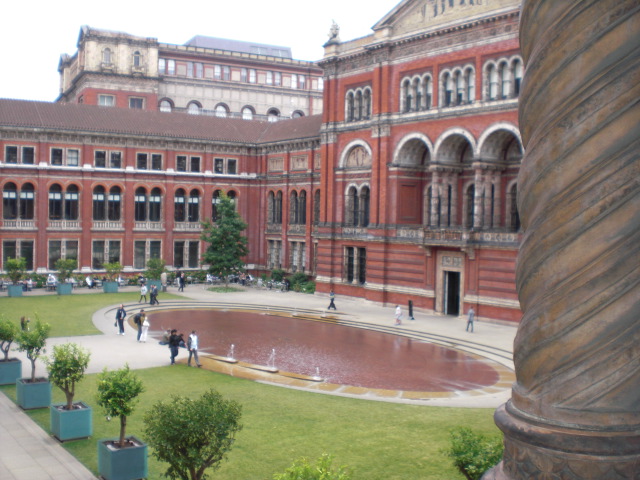
Upon my first visit to the V&A I took the Circle line, which has an underground tunnel that leads directly to the museum entrance at the sculptures section. An entire room full of Roman structured sculptures that led into the Fashion exhibit. Now I would not consider myself a fashionista by any means, however I was completely taken aback. I wandered through this exhibit for almost an hour. The transformation of clothing through the ages, the detail required to make a garment, and the creativity to create something previously unseen– these are the things that I was taking in as I appreciated the artistry that went into every item of clothing on display in that exhibit. The aspect that astounded me the most though was the central portion, a place set up specifically to display the work of current fashion students at the Royal College of Art. It is incredible that these students are able to design a collection on paper and then transform it into clothing that can be worn and then displayed in a world-class museum.
Once I finally made it through the Fashion Exhibit I discovered that there was a Theater and Performing Arts Exhibit and swiftly went upstairs to try and find it. After an hour of searching and wandering through the other exhibits I finally found the exhibit and realized that I was supposed to be meeting the people I had gone with and so I had turn right around. I had wandered through the Sacred Objects exhibit, Prints of Beautrix Potter, and Rod Iron structures, but had not made it to the one exhibit that I wanted to see.
About two weeks later I finally made it back to the V&A and went straight upstairs through the jewelry exhibit and to the Theater and Performing Arts Exhibit. I had heard that the exhibit was full of costumes, but that was only a small section of the room. When you first walked into the room there was a short video playing about ‘What is a Performance? The video touched on music, dance, and theater however I think performance is so much more than that, and the remainder of the exhibit touched on all of the other things that make up a performance: the planning, the staging, the scenery, the promotion. Nothing was left out. I thought that this exhibit was a really good introduction to theater and performing arts.
I’m very glad that I made the journey back out the V&A because I would have been very disappointed if I had not experienced as many of the exhibits as possible. I think part of the reason I enjoyed the V&A so much was because a lot of the exhibits were not stereotypical ‘art’ exhibits. I felt that the Sacred Objects, the Fashion, the Jewelry and even the Theater and Performing Arts exhibits all offered a variety of things to look at and for me just another perspective of what I would considered ‘art’.
Tags: Amanda
September 14th, 2009 · 2 Comments
I had the chance to attend the Feminist Literature tour in which I not only learned about women writers who resided in the Bloomsbury area, but also on how spaces affect who we are and everything that we do. I am intrigued with this notion. Recently I posted a blog on space, specifically focused on sacred/holy spaces, in this blog I will look back and focus on a few others others.
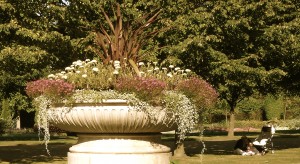
Green Green GREEN
Spaces of recreation, golden flowers and perfectly trimmed grass is what I think of. It is impressive to me how well kept they are. When we visited Regent’s Park during class for the first time, I was at a loss of words, for I had never in my life seen a space so beautiful. William Blake captures this beauty in his poem titled “The Lily:”
The modest Rose puts forth a thorn,
The humble sheep a threat’ning horn:
While the Lily white shall in love delight,
Nor a thorn nor a threat stain her beauty bright.
Regent’s Park could not be touched, human hands could never be gently enough to handle a flower’s delicate body. So untouchable, the flowers arranged almost to perfection. Ralph Waldo Emmerson once said that “Earth laughs in flowers,” and I believe him.
Hyde Park, almost as magical, but words cannot capture the immensity of this park. The amount of green that surrounds you at any given moment is difficult to describe. This park in particular serves as more than just a space for recreation, it is also a place where history is preserved, where various neighborhoods unite and where kids grow up to later bring their own kids to play at Kensington Gardens or near the lake. Green Park, a sort of gateway to Buckingham Palace (if you get off at the Green Park Tube station), can never be compared to Hyde Park for it lacks in immensity. Even though the deck chairs are a nice touch to the park, the area I visited lacked some color (as in floral color); I was not impressed. (Buckingham Palace itself was not very impressive. I was surprise to discover that it actually isn’t an enormous, glorious and royal-looking mansion… I guess it’s a good thing that it isn’t after all!)
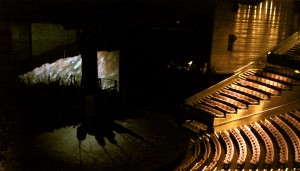
Let’s start the show!!!
Sometimes walking in for the first time takes my breath away, and sometimes the shows blows my mind, other times the idea of sitting there makes me wonder… wow. The three different halls of at the National Theatre, The Globe, Duke of York’s, the Phoenix and last but not least Royal Albert Hall! So here’s the list: “Troilus and Cressida,” “Arcadia,” “All’s Well That Ends Well,” “As You Like It,” “Pitmen Painters” and the not-so awesome musical “Blood Brothers,” oh and the amazing violin concerto at the Royal Albert. In London, I am never too far from New York City’s Broadway experience! The difference, the London experience always feels fulfilling no matter how horrible the play was. This is probably because Broadway shows are not exactly affordable, and while the National Theatre insists on having a wide range of prices (so that everyone can enjoy the theatre), Broadway just seeks revenue and to maintain it’s current status and popularity. I mean, to have Rick Fisher (who by the way is a Dickinson alum), winner of of a Tonny award, come to speak to us about his thoughts and experiences with London’s theatre scene, that within itself was enough to top all of the Broadway shows I have seen in my life! I <3 the London theatre experience!
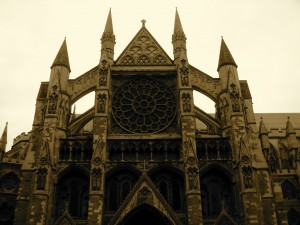
Religious spaces.
Intricate architecture, imagination, creativity and grace is what comes to mind when I think of churches. I’ve written a blog about them but I wanted to look back at a few of them. Westminster, ridiculously sacred, marvelous, immense and glorious. The same can be said about St. Paul’s Cathedral and the Hindu Temple we visited. At Brixton (where I directed a tour along with my teammates), I learned that religious spaces play a huge role in the community, one that extends beyond any religious affiliations. One specific church we visited during our research, Corpus Christi Roman Catholic church was involved in the reconstruction of the Brixton area after the Brixton riots, when parts of the neighborhood where damaged/destroyed due to violent protests. It always brings joy to my heart when people come together to help each other, regardless of any religious/cultural boundaries.

Clubs NOT Pubs
Ooooh pubs…. I’ve heard that you can see London’s history evolve in these spaces, and although they are known as spaces of leisure and social interaction their walls can tell unknown stories of both know and unknown visitors. I am always intrigued by pubs, so intrigued I am intimidated by them. I now that sounds a little ridiculous but in pubs I feel pressured to consume alcohol (after all that is the main purpose of a pub: to provide alcoholic beverages) and to maintain conversation when really all I want to do is dance to the awesome music playing in the background. Rebbeca (who along with 4 others constructed a tour of London’s historic pubs) has attempted to both enlighten me as well as persuade me to engage in pub culture, but I have yet to fully explore the wonderful world of London’s historic pubs.
Clubs, on the other hand, I’ve also had a difficult time with. I’ve realized that there isn’t much dancing that goes on, but rather an attempt to dance, which actually means jumping around to Lady Gaga’s “Just Dance” (pop/techno song). Over all, I have enjoyed late hip hop nights at Metra (dance club a few street corners off the Leichester Square tube stop) only because I have shared that space with amazing people who can turn any floor into a dance floor. (Thanks Anthony, Jeyla and Patsy!)
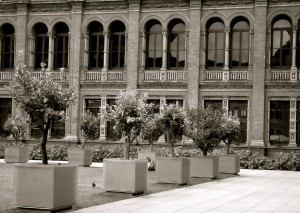
Spaces, our everyday living takes place within them, whether they are churches, clubs, parks or theaters. We lack to realize their importance, we never stop to think of how a room may affect how we feel about ourselves and about the rest of society. A room can change our lives, like the reading room at the British Museum that the feminist writers group spoke of on their tour. This room clearly changed Virginia’s Wolf literature, among other authors, I’m sure.
Note to self: Whether this room is physical or mental, it is important. We must take more time to appreciate a rooms ability to change the way we exist in our own individual worlds.
The End.
Tags: Flow · Uncategorized
September 14th, 2009 · 1 Comment
Overall, I have really enjoyed being able to go to the theatre and compare the different productions that we have seen. But now that we have seen our last performance, I feel prepared and capable to tie in the themes that these productions present into a few of the overarching themes that we have experienced on the walking tours, class discussions, and readings. For time’s sake and space, I mostly would like to focus on The Pitman Painters and Blood Brothers in this particular post. The Pitmen Painters was undoubtedly one of the best straight-play performances that I have ever seen. The depth and layering of the dialogue really portrayed the time period in a realistic, yet humorous way.
This draws me to my next point: the playwright brilliantly conveyed the realistic themes of class struggles and economic differences while still managing to couple the drama with a relatable sense of humor. I felt that this performance creatively discussed the struggle and tension of the time. All of the men enjoyed painting, especially Oliver, and this simple act of painting morphed into a larger, more important symbol: a symbol of unfulfilled desire, and of the vain hope for a better future. As simple and unimportant as painting may seem to us now, it became an unmistakable symbol of class division throughout the play. For example, as much as Oliver wanted to paint, to leave the mines, and be paid for doing something that he loved, he was unable to liberate himself from the burdens of his class position. This internal and external struggle was highlighted by his benefactor, a woman of wealth who desired to collect his paintings. This brings up another distinction: while Oliver would be working tirelessly at painting, this wealthy woman would simply pay a small sum of money to collect his work and though he would leave the mines, Oliver would still be under the rule of another person. I think Oliver recognized that his paintings wouldn’t change his circumstance and in his mind he believed an escape from the mining world would be futile.
As a member of the audience, I can attest for the fact that I was hoping he would leave the mines, work as a painter, and become famous and wealthy enough to bring his friends out of the mines and support them until they were old men. But this vain hope makes the ending even more jarring and eye-opening. We all hope that Oliver’s life will work out happily ever after, but in reality he was a slave to the constraints and prejudices of his class—much like the immigrants in London are still laboring under today. As a group we have traveled to market after market and it is here that I have noticed a vicious cycle. Certain people are always “the outsider” the “laborers” and it is generally frowned upon for anyone to try and move up the ladder, so to speak. Reaching way back to the beginning of our stay in London, we discussed Great Expectations. This same theme occurs in Pip’s life. People are to stay within their class and not deviate from the norm or else pain and struggle will befall them. Better to remain in one’s class with one’s struggles than to risk the climb to the top- to achieve more.
Overall, the Pitmen Painters offered me a visual and emotional insight into the plight of the lower class. I thoroughly enjoyed this play, and though it was essentially a work of art, a fiction, it was based on the lives of actual people.
Now the Blood Brothers on the other hand, lacked the heavy reality and depth that the Pitmen Painters possessed. Though I generally love musical theatre, this particular performance struck me as vapid…though I did notice a similar theme of class division. I don’t really feel the need to go into detail here simply because there was no real depth to the performance other than the fact that one brother struggled throughout his life and the other didn’t because of his wealth.
Though the musical was extremely dramatic, it actually lost its sense of any authenticity that may have saved it from becoming complete crap. Now although I am railing on this, it also echoed the Pitmen Painters by emphasizing that class and wealth have a profound effect on the outcome of one’s life. These two plays, though both very different, have really helped me to connect and visualize the theme of class and economic struggle through both thought-provoking dialogue (mostly in Pitmen Painters).
Tags: Maddie · Theatre
September 14th, 2009 · 2 Comments
Here are two very different quotes/poems about the British Museum (especially the Reading Room)
“If an army of monkeys were strumming on typewriters, they might write all the books in the British Museum”
-Sir Arthur Eddington
| At the British Museum
-Richard Aldington
I turn the page and read:
“I dream of silent verses where the rhyme
Glides noiseless as an oar.”
The heavy musty air, the black desks,
The bent heads and the rustling noises
In the great dome
Vanish …
And
The sun hangs in the cobalt-blue sky,
The boat drifts over the lake shallows,
The fishes skim like umber shades through the undulating weeds,
The oleanders drop their rosy petals on the lawns,
And the swallows dive and swirl and whistle
About the cleft battlements of Can Grande’s castle…
I love the-wait for it- juxtaposition of these two quotes. One describes the beautiful “great dome” of the Reading Room and the other yields a sarcastic, even cynical, view of the very same room. I appreciate both for their differences, but I have to say that the British Museum is exceptional.
The sheer size of the building is enough to be completely overwhelming and the collection itself is staggering. When I first walked in and saw the Reading Room and the white floor and walls, I really felt the weight of the great minds of the past bearing down on me. At the time I had also been doing research on Virginia Woolf and George Eliot, two feminist literary figures in the 19th century. Both had studied in the Reading Room and had come up with some amazing pierces of literature there. For me, it bordered on a spiritual experience simply because I was in the presence of progressive thinkers who had so influenced the literary world.
And so that was my first impression of the British Museum and they didn’t stop there…I also began to formulate some questions about the past, present, and future of our own history.
Walking through the museum and looking at the relics and artifacts from ancient empires made me wonder what antiquities future generations will keep in museums from our lifetime. When does it become ok for museums to take bodies from, say, sarcophaguses and put them behind glass? When do our tools become tools of the past? I am still pretty astounded by exhibits and the sheer history that is encompassed in a single place. The funny thing about museums (and this one in particular) is that they paradoxically make these ancient civilizations visual, yet somehow less real. I think this is largely due to the fact that the pots, statues, and other relics sit within a huge and beautifully furnished building. They are simply displayed on stands, under lights, and behind glass. I feel more like I am peering through a window into another time rather than getting the sense that these artifacts were used by people as tools for everyday life. Overall, it was hard for me to marry the idea of ancient artifacts behind glass and it has given me something to think about as I continue to visit more museums while I’m in London.
Cabinet War Rooms
This particular blog will mostly be about how I felt as I walked through the war rooms which were pretty frightening
IDENTITY
Oxford v. Bath |
Tags: Maddie
September 14th, 2009 · No Comments
In this wonderful blog post, I think I shall convey my experiences at the John Soane Museum. Essentially this museum was founded by Sir John Soane who turned his home into an area in which artists and art lovers alike could come in and appreciate his collection of antiquities.
The overall effect was fairly awesome because this museum has such a variety of artwork, including roman, medieval, neo-classical, and Egyptian works of art. There were some really beautiful statues, pieces of stained glass, paintings, and various other ancient artworks. I also noticed that one of his more famous collections is from ancient Egypt…including a sarcophagus? It’s amazing to me what money can buy if you have enough of it.
Anyways– I just visited the website to get some more background on John Soane himself but there is not an exorbitant amount of detail on his life. They do mention, however, that he was a distinguished architect who designed his own house so that it may become “a museum to which ‘amateurs and students’ should have access”. He left his collection and house to the nation in1837 because after his wife died in 1815 he never remarried and decided to establish the house as a museum.
The museum is architecturally beautiful, filled with illusions and surprises everywhere. I guess my favorite thing about this particular museum was that John Soane had made an effort to share historic art with others, so that no matter one’s circumstance he or she could lay their eyes on ancient relics. This was the one really redeeming quality to this particular museum. Don’t get me wrong, I loved the actual art that was involved but to me, the most important part was that John Soane wanted everyone to benefit from his collection. Maybe by the time I got around to actually visiting it, I was pretty tired of museums in general. Room 26 informed me that they had seen so many museums recently that Jeyla woke up and asked both Anya and Audrey if they were in a museum. Despite the fact that this is a hilarious story and I laugh every time I think about it, I think the moral of what I’m trying to say is that we have visited so many museums that this particular one really didn’t stand out for me, as say, the Tate Modern. Overall, I appreciated the experience but wouldn’t revisit it. On the Brightside for those of you who loved it I think the website as an interactive tour you can take whenever your little heart desires! 🙂
Tags: Maddie · Museums
September 14th, 2009 · No Comments
I know that the Tate Modern was not a required blog post, however I had to write about it simply because it was one of the craziest museums I have ever been to. I am still debating as to how I feel about the overall experience…I mean, I really can’t decide whether I loved it or hated it.
It was somewhat shocking at times and other times somewhat bland and even meaningless. But I briefly wanted to reflect upon the evolution of modern art and how it marks a change in culture and politics. I know very little about the modernist artists themselves, but this particular museum inspired me to do a little more research on the background of these artists so that I may be able to understand the meaning of their art a bit better.
What I discovered through some online sources about their biographies, is that many of them were creating their works based on their childhood experiences or the social and political reformation that took place in their native countries. They discussed the meaning of life, of art itself, of emotional and physical struggle. And all of these things were created and presented in a way that was completely unique to each artist’s style.
Not one art exhibit resembled the next (though I think I could recognize “movements” in the content of the pieces so to speak). Yet some were just disturbing and I think we can all agree on which one I’m talking about– so I’m really not going to go into another further detail to describe it. Mostly I had to ask myself while walking through the museum: Is this art? It’s a really difficult question to ask oneself because “art” is subjective. What may be the most beautiful work to me, maybe another person’s idea of complete crap. But as I wandered through the Tate, I began to think that maybe modern art is simply taking what is abstract and turning it into the concrete, allowing the artists a kind of therapy in their process of creation. I read somewhere that the closest a man can ever get to childbirth is to create a work of art and I can see the truth in this statement, especially because some of my favorite works were done by male artists. I can see the sweat, tears, blood, and time that went into the evolution of the art and I can see that there is an effort to make other people understand, to feel more than what a pretty picture on a wall may stimulate in the observer. Modern art to me, felt like a battle- a struggle for connection, a raw and untamed effort to make others understand something greater.
I guess overall, now that I have talked my way through the Tate, I have found that it has inspired more thought and reflection than any other museum. And for that, I think I may like modern art more than I first realized.
Tags: Maddie · Museums
September 14th, 2009 · 2 Comments
When you think about identity the person you are, the person you wish to become you never truly recognize that ultimately you have no control on your identity. What makes up one’s identity; Race/ethnicity, gender, sexuality, class, job, degree? The list can go on forever, and the major commonality among all of these aspects of one’s identity is that they are all socially constructed. You never get to decide what you wish to be, and it is unique. Of course not anyone person in the world is the same, but an individual is never able to define themselves without conforming to society in one way or another.
In the novel Second Class citizen Adah is trying to escape her confined gender role as a woman in Nigeria. In order to do so, she flees to Europe in search for a better life. She discovers that her societal role in Europe is far worse than it was in Nigeria and she is further oppressed because of what her identity. If we examine the oppression that Adah faces in both Nigeria and Europe we can get a better understanding of identity. In Nigeria the only obstacle that Adah faced was the fact that she was a woman. Adah was a much respected woman in her society, but because of her gender she faced oppression that affected her subjectivity in society. It is this reason that led her to flee to Europe. However when she arrived in Europe other parts of her identity was realized. In Nigeria Adah was just a rich woman, but in Europe Adah was a middle class black woman. This realization of her racial identity is something she never had to acknowledge because in Nigeria she wasn’t a minority, but when entering Europe her identity becomes altered. In essence she has not control of her identity because identity is not self defined. Identity is defined by society.
Everyone in this world from birth is given their name, gender, and sex. As they grow they are allotted a certain number of social constructions to add to “their identity.” No one born in today’s world can exist without being defined by society, and even choosing to remain as an “other “or remained undefined you are still conforming to a societal role. The human race has become so compliant on social construction, that they have become our norm. And what makes matters worse is that so many people are unable to realize that by simply existing they are being forced to conform to society. To answer Jeyla’s question, Identity is always societal defined.
Tags: Anthony







